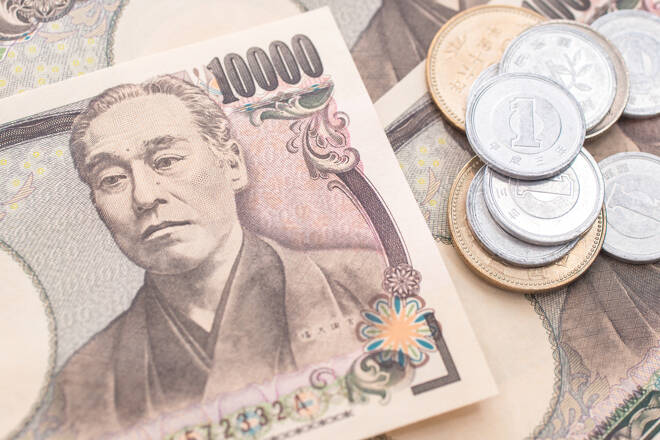Advertisement
Advertisement
USD/JPY Forecast: Price Hangs on US Inflation, BoJ Chatter, and China PMI
By:
As the Bank of Japan signals a potential policy shift and China faces manufacturing contraction, the USD/JPY is influenced by rising US inflation.
Highlights
- The USD/JPY reversed some of its losses from Tuesday, ending Wednesday up 0.25% at 146.223.
- Hawkish BoJ chatter may narrow the monetary policy gap, favoring the dollar.
- US Core PCE Price Index and personal spending will be in focus, with inflation numbers potentially refueling bets on a Fed rate hike.
Wednesday Overview
On Wednesday, the USD/JPY gained 0.25%. Partially reversing a 0.46% loss from Tuesday, the USD/JPY ended the day at 146.223. After a range-bound morning, the USD/JPY rose to a high of 146.535 before sliding to a low of 145.556.
Industrial Production and Bank of Japan Commentary in Focus
On Wednesday, a fall in household confidence eased fear of a near-term Bank of Japan tweak to monetary policy. At the Jackson Hole Symposium, BoJ Governor Ueda discussed the need for wage growth and demand to drive inflation before shifting from ultra-loose.
Bank of Japan Board Member Naoki Tamura delivered a more hawkish outlook on Wednesday. While also discussing the need for wage growth and demand-driven inflation, Tamura mentioned ending negative rates in early 2024.
More hawkish chatter could begin narrowing the monetary policy gap, favoring the dollar. Bank of Japan Board Member Nakamura speaks this morning. Hawkish talk will move the dial.
Industrial production numbers from Japan will also provide direction. Economists forecast industrial production to slide by 1.4% in July (June: +2.4%).
However, private sector PMI numbers from China will impact market risk sentiment. A more marked contraction across the manufacturing sector could spook the markets. Economists forecast the NBS Manufacturing PMI to rise from 49.3 to 49.5.
Investors should also consider the NBS Non-Manufacturing PMI, with service sector activity contributing more to the economy. Economists forecast the NBS Non-Manufacturing PMI to slip from 51.5 to 51.1 in August.
Weaker-than-expected numbers could fuel expectations of more action from Beijing. The prospects of more stimulus would support the USD/JPY.
US Inflation and Consumption in the Spotlight
US Core PCE Price Index and personal spending will be in focus this afternoon. A more marked pickup in inflation could refuel bets on a Fed rate hike. Economists forecast the Index to increase by 4.2% year-over-year in July versus 4.1% in June.
US consumer confidence and labor market stats have eased expectations of further Fed rate hikes.
However, the inflation numbers and a larger-than-expected increase in personal spending would force investors to reconsider their Fed policy outlook.
Other stats include jobless claims and personal income numbers. However, we expect inflation and spending to be the focal points ahead of the US Jobs Report. An upward trend in spending fuels demand-driven inflationary pressures, leaving rate hikes on the table.
USD/JPY Price Action
Daily Chart
The lower level of the 146.6 – 147.3 resistance band limited the upside on Wednesday. Better-than-expected US inflation and personal would give the bulls a run at the upper level of the 146.6 – 147.3 resistance band.
Considering the 14-Daily RSI at 59.21, the USD/JPY has room to run before hitting overbought territory. However, another set of disappointing US economic indicators would bring the 145.0 – 144.3 support band into view. Notably, the 50-day and 200-day EMAs also send bullish signals. A return to 147 hinges on the US numbers.
4-Hourly Chart
The 4-Hourly Chart reaffirms the near and longer-term price signals. The USD/JPY holds above the 50-day and 200-day EMAs. However, softer US economic indicators would support a fall through the 50-day EMA to target the 145.0 – 144.3 support band into view.
Better-than-expected US economic indicators would give the bulls another run at the upper level of the 146.6 – 147.3 resistance band.
However, the 47.81 14-4H RSI reading gives the USD/JPY room to fall before hitting oversold territory
About the Author
Bob Masonauthor
With over 28 years of experience in the financial industry, Bob has worked with various global rating agencies and multinational banks. Currently he is covering currencies, commodities, alternative asset classes and global equities, focusing mostly on European and Asian markets.
Advertisement
